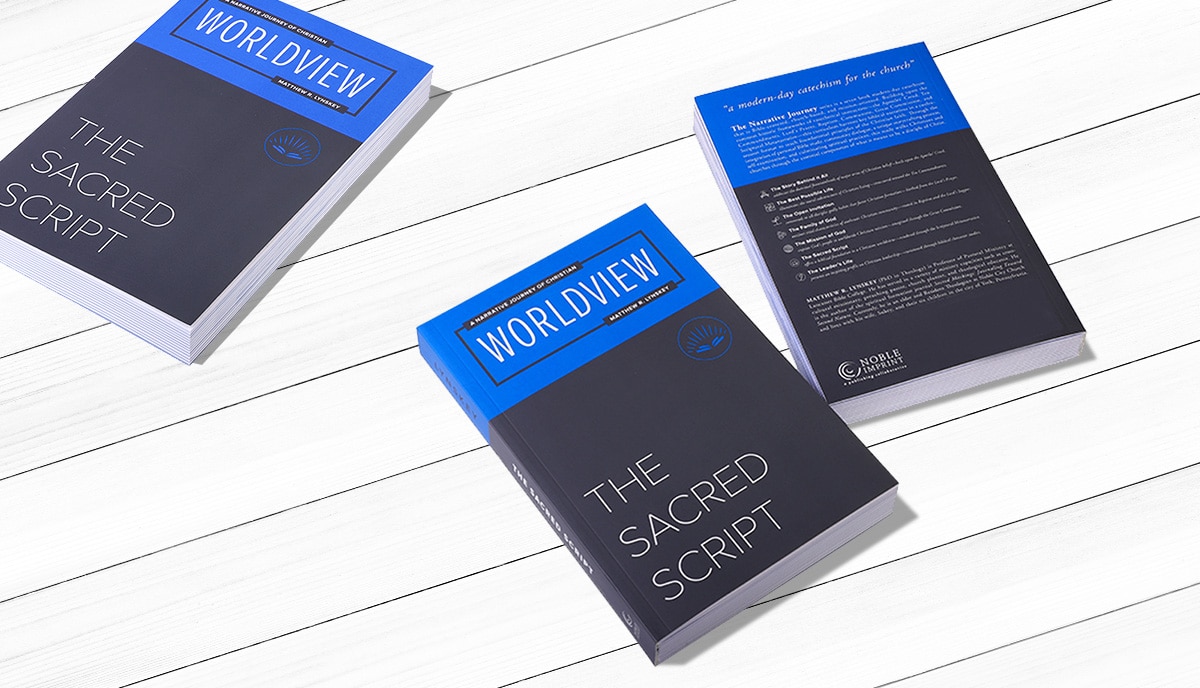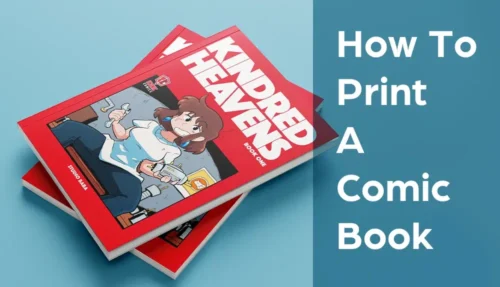Are you looking to promote your self-published paperback novel? Are you looking for ways to boost the reach of your paperback? If so, then you've come to the right place!

In this blog post, we’ll discuss 10 proven strategies for successful paperback marketing. From creating a marketing plan to leveraging social media and paid ads, we’ll cover everything you need to know to successfully market your self-published paperback novel. So, let’s get started!
Introducing paperback marketing
First things first, let’s take a look at what paperback marketing is and why it’s important. Paperback marketing is the process of marketing and promoting a self-published paperback book. It involves creating a plan for reaching your target audience, connecting with them through various channels, and leveraging various marketing tactics and tools to increase visibility of your book.
Paperback marketing is important for two primary reasons. First, it helps you reach a wider audience and drive more sales. Second, it helps you build a loyal fanbase who will help spread the word about your book. In other words, it’s essential for any self-published author looking to increase their reach and grow their readership.
Creating a marketing plan for your paperback
Now that you have a better understanding of paperback marketing, let’s move on to creating a marketing plan for your paperback. A successful marketing plan should include the following elements:
- Set realistic goals and objectives
- Research your target audience
- Create a budget and timeline
- Identify marketing channels
- Set up tracking systems
Setting realistic goals and objectives is the first step in creating a successful marketing plan. Ask yourself what you hope to achieve from your marketing efforts. Do you want to sell a certain number of books in a certain amount of time? Do you want to hook people into a series? Would you like to promote your back catalog of previous published works? Do you want to build a loyal fanbase? Once you have your objectives, you can begin to research your target audience. Who are they? What do they like? What kind of content do they consume and where do they go to get it?
Once you’ve identified your target audience, you can create a budget and timeline for your marketing efforts. How much money do you have to spend? How long do you have to achieve your goals? Having a budget and timeline will help you stay on track and focus on what’s most important.
Next, you’ll need to identify your marketing channels. What platforms and tactics will you use to reach your audience? Social media? Email marketing? Paid ads? Once you’ve identified your channels, you can start setting up tracking systems to measure your success.
Networking and connecting with your target audience
Once you’ve created a marketing plan, it’s time to start networking and connecting with your target audience. The key here is to build relationships and establish a genuine connection with them. Here are a few tips to help you get started:
- Reach out to influencers in your niche
- Engage with potential readers on social media
- Participate in online forums and communities
- Connect with book bloggers and reviewers
- Attend book festivals and other events
Reaching out to influencers in your niche is an effective way to connect with potential readers. You can search for influencers on social media using hashtags or use specialized platforms like BuzzSumo to find influencers in your niche.
Engaging with potential readers on social media is also a great way to connect with them. You can use social media to share content, start conversations, and even host giveaways.
Participating in online forums and communities—especially book blogger communities and Goodreads—is also a great way to network and connect with potential readers. You can join forums related to your niche and engage in conversations with other members. But don’t always push your book. Get real and develop interesting conversations and allow people to discover your book for themselves once they become interested in you and click through to check out your profile.
Connecting with book bloggers and reviewers is also a great way to get the word out about your book. You can search for book bloggers and reviewers on YouTube and Amazon, for example, and contact them to review your book or offer to write a guest post for them, with a link to your sales page in the author bio.
Lastly, attending book festivals and other events is a great way to connect with potential readers face-to-face. This is a great opportunity to meet people, build relationships, and promote your book. Order a stack of books, set up your stall, and chat to anyone who shows and interest.
Leveraging social media to increase visibility of your paperback
Social media is a powerful tool for increasing the visibility of your paperback. With billions of users across multiple platforms, social media can help you reach a wide audience and boost your book’s reach. Here are a few tips to help you develop this side of your strategy:
- Create a social media plan
- Optimize your profile and posts
- Share engaging content
- Create a hashtag
- Engage with your audience
Creating a social media plan is the first step in leveraging social media for your paperback marketing. Ask yourself what platforms you’ll use, how often you’ll post, and what types of content you’ll share. Don’t try to be present all the time everywhere—unless you can afford to pay a team to manage your social media for you. Select one or two platforms you genuinely love, and stick with them.
Optimizing your profile and posts is also important. Make sure your profile is up to date and that your posts are optimized for each platform. It should display an image of your book or books and link to all the sales pages and contact places associated with it.
Sharing engaging content is one of the best ways to build an audience on social media. Share content that’s relevant to your niche, that’s entertaining, and that resonates with your target audience.
Creating a hashtag is another great way to increase visibility. Create a hashtag that’s unique to your book and encourage your followers to use it.
Lastly, engaging with your audience is key. Respond to comments, answer questions, and start conversations. This will help you build a loyal fanbase and increase visibility of your book.
Utilizing email marketing to reach your audience
Email marketing is another powerful tool for reaching your target audience and boosting your paperback sales. It’s a proven and effective way to stay in touch with your readers and promote your book. Here are a few tips to help you create a powerful email book marketing campaign:
- Build an email list
- Personalize your emails
- Offer incentives and discounts
- Send regular emails
- Track your results
Building an email list is the first step in utilizing email marketing to reach your audience. You can use a platform like Mailchimp or Constant Contact to build an email list and start collecting emails.
Personalizing your emails is also important. Address your readers by name and use language that resonates with them. Don’t just make a sales pitch for your book, but give your readers free short stories set in the same world if you’re a fiction writer, or short articles, essays, tips and advice if you write non-fiction. Try to make all your emails worth opening in their own right. Give as much value in each mailing as you can.
Offering incentives and discounts are a great way to encourage people to sign up for your email list. You can offer discounts on your book or offer exclusive content to your subscribers. There are several channels you can go to where you can begin to attract subscribers for your list. Social media, blogging platforms, and even paid ads have all been proven effective.
Sending regular emails is also important. Make sure to send emails on a regular basis so that your readers don’t forget about you. Ask them questions and respond to their answers. Run quizzes, giveaways, and look for other methods to keep your audience engaged.
Lastly, tracking your results is key. Use your email provider’s platform analytics to track open rates, click-through rates, and other metrics which will give you an insight into what’s resonating and what isn’t, so you can write better, more targeted emails going forward.
Using paid ads to increase your paperback's reach
Paid advertising can be an effective way to increase the reach of your paperback but you’ll need to do some self-educating first if you’re new to the game. You can use platforms like Google Ads and Facebook Ads to reach a wide audience and promote your book so long as you create the right kind of advertisements, keeping testing and refining, and start with a small budget while you learn the ropes. Most paid advertising, to work for book promotion, isn’t a “set and forget” solution. You need to keep on top of it, tweak campaigns and monitor your spend. Before you begin, think about the following factors:
- Set a budget
- Choose the right platform
- Create a compelling ad
- Test different ad variations
- Track your results
Setting a budget is the first step in using paid ads to promote your paperback. Ask yourself how much you’re willing to spend and what kind of results you’re expecting. Choosing the right platform is also important. Different platforms have different features and targeting options, so make sure to choose the platform that’s best suited for your needs. Creating a compelling ad is also key. Make sure your ad is eye-catching, engaging, and relevant to your target audience. Testing different ad variations is also important. Test different ad copy, images, and targeting options to see what works best. Lastly, tracking your results is vital. Use the available analytics to track impressions, clicks, and conversions.
Hosting events to promote your paperback
Hosting events—live or online—is often a powerful way to promote your paperback and build relationships with your readers. You can host book signings, book club meetings, book readings, or even launch parties. To get started with this strategy:
- Choose the right venue
- Promote your event
- Create an engaging experience
- Offer incentives and discounts
- Follow up with attendees
Choosing the right venue is the first step in hosting an event to promote your paperback. Make sure the venue is accessible, easy to find, and large enough to accommodate your guests. Libraries and literary cafes are often great venues for book promotion, as are bookstores. If it’s an online venue or a platform like FaceBook, Zoom, or Google Meets, make sure you get the technology and links sorted out in advance.
Promoting your event is also important. Use social media, email marketing, and other channels to let people know about your event. Be prepared so that you can be sure you’ll be creating an engaging experience. Have activities and entertainment to keep your guests engaged and encourage them to stay longer. Offering incentives and discounts are a great way to encourage people to attend your event. You can offer discounts on your book or offer exclusive content to your attendees. Lastly, following up with attendees is essential. Send an email after the event to thank them for coming and encourage them to spread the word about your book.
Writing guest posts and articles
Writing guest posts and articles is a great way to reach a wider audience and promote your paperback if you have the time and skills. You can write guest posts for relevant blogs or contribute to online publications. This strategy requires some resilience as you’ll be rejected and refused more often than you’re accepted. But don’t take it personally. It’s probably just because the blogger you’ve approached has a full guest ist already or recently ran a piece on a similar book to yours or has simply spent out their guest budget for that period. But to give yourself the best chance of a successful guest post blogging tour, make sure to cover the following:
- Research relevant blogs and publications
- Pitch a compelling story
- Write an engaging article
- Promote your article
- Respond to readers’ comments
- Track your results
Researching relevant blogs and publications is the first step in writing guest posts and articles. Look for blogs and publications related to your niche or book genre or topic and make sure they accept guest posts. Read the blog to get a feel of the style, tone, length f content, and so on, Then write a short, polite pitch. Make sure your pitch is unique, personalized, relevant, and professional in tone. When someone offers you a guest post, ask for their guidelines and follow them with care. Writing an engaging article is key. Make sure your article is informative, entertaining, and angled to the blog’s readership. Most bloggers expect you to help with promoting the article once it’s published, and it’s a good idea to do this anyway. Use social media, email marketing, and other channels to let people know about your article. And on the day of publication and for the next 24 hours, keep checking in and respond to any questions or comments that readers leave. Lastly, tracking your results is important. Ask for feedback from your blog host and for any insights they can give you on numbers of readers and click-throughs. Don’t forget to thank them for the opportunity and let them know you’d be willing to write another post in the future if it’s been successful.
Creating a YouTube channel to promote your paperback
Creating a YouTube channel to promote your paperback is not a short-term solution to self-published book promotion, but if you have the right skills, technology, and time, it can be a great way to reach your readership and build an engaged relationship with them. Here are a few tips to help you get started:
- Create a branded channel
- Upload engaging videos
- Promote your videos
- Engage with your audience
- Don’t monetize
Creating a compelling channel is the first step in creating a YouTube channel to promote your paperback. Make sure that—like your social media channels—everything is branded and geared towards your book or books and you as an author. Keep it focused. Make sure your channel is up to date and optimized for SEO, too. Uploading engaging videos is a must. Make sure your videos are entertaining, informative, and relevant to your audience. Don’t only promote your book; review other people’s books, talk about the writing process, give insights into the background of your stories, how you create, which writers inspire you and more. Use other social media, email marketing, your blog, and other channels to let people know about your videos. Engaging with your audience is also important. Respond to comments, answer questions, and start conversations, and encourage visitors to subscribe. Use the inbuilt YouTube Analytics to track views, watch time, and other metrics.
Talk to us!
So, we’ve discussed 10 proven strategies for successful paperback marketing for self-publishers. As one of the world’s most reputable offset printing companies—with over 25 years success behind us and a global reputation for quality products, efficient service, and top-notch customer care—we don’t only print books, but we can also help you with your marketing materials, too. Flyers, brochures, postcards, stickers, thank you cards, posters, and more are all potentially powerful tools in your book promotion kit. We can print a wide range of promotional materials to help you market your self-published paperback novel. We hope this blog post has been helpful and that you’ve found the information you’re looking for. If you have any questions or would like to discuss your future paperback printing needs, please don’t hesitate to call us. We’ll be delighted to help. Let’s talk!











